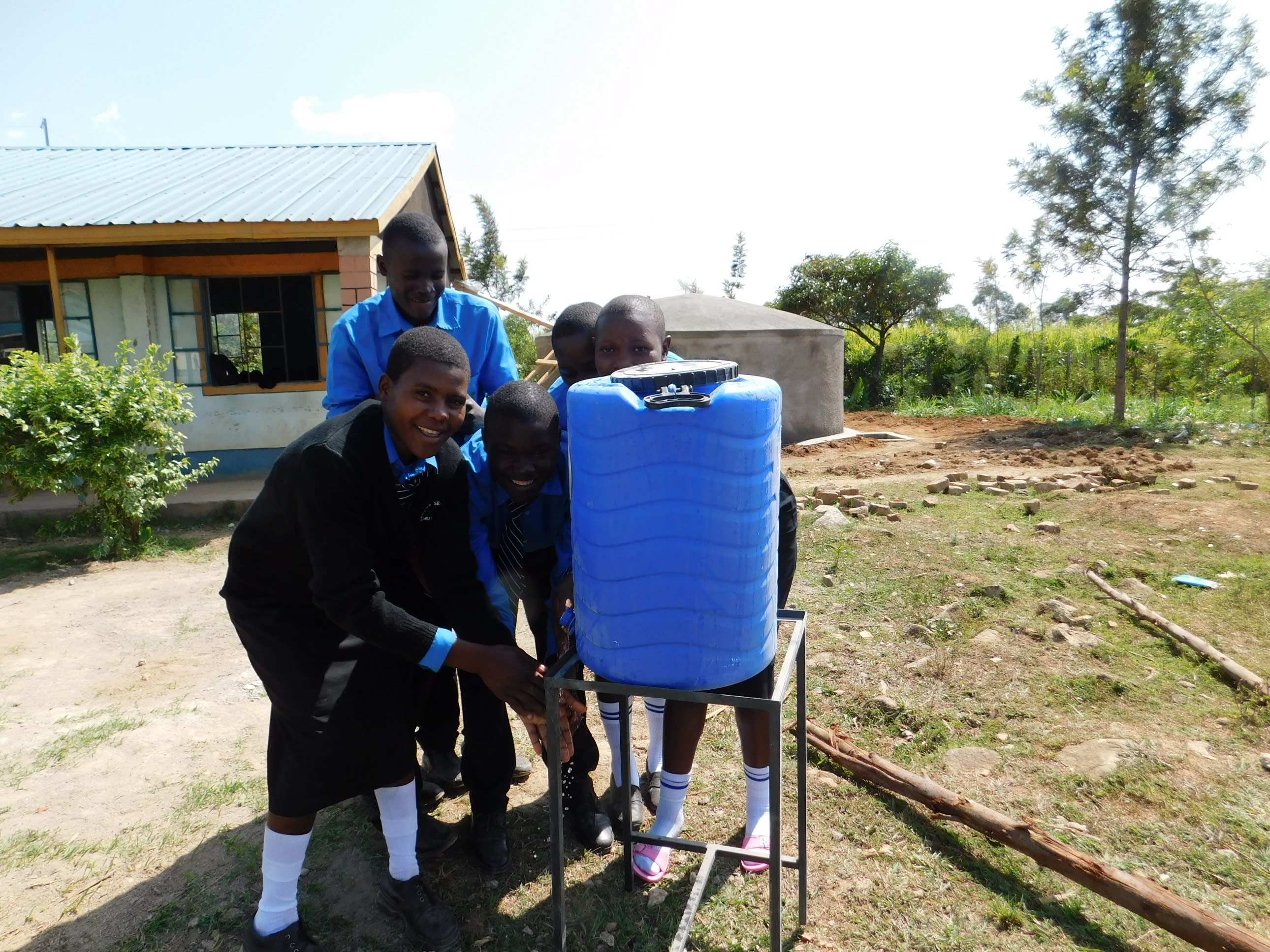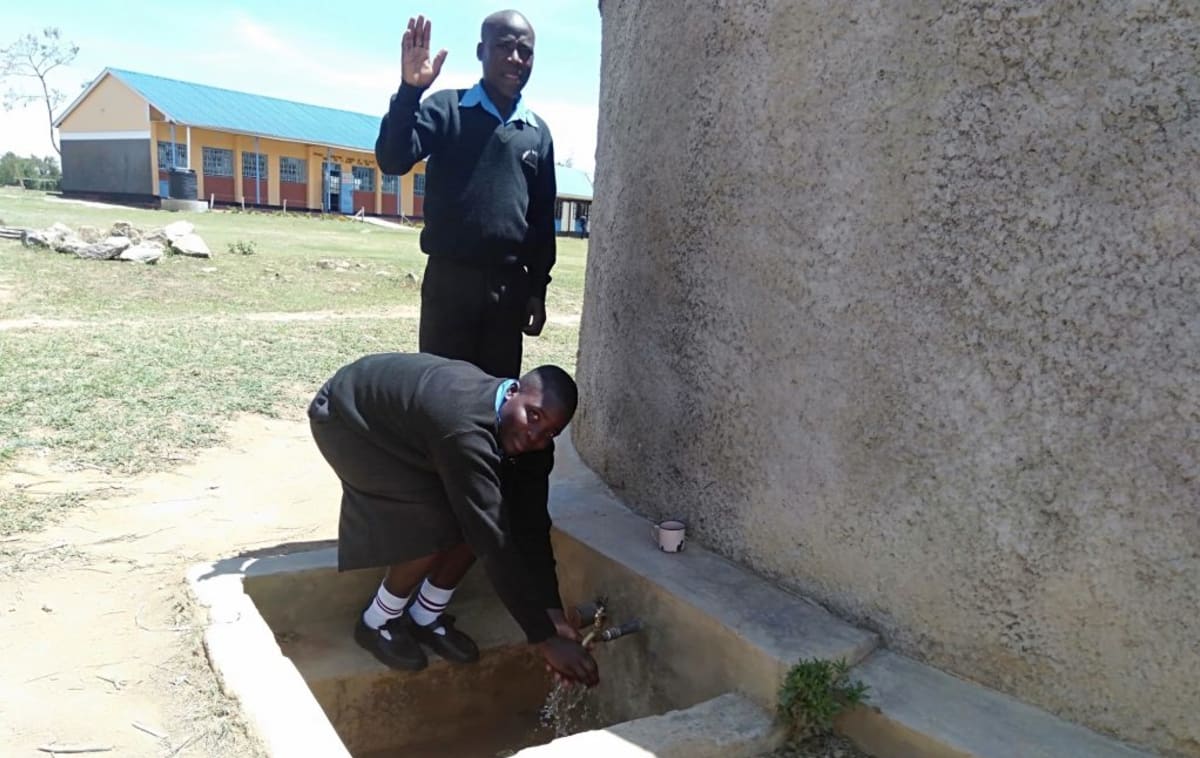Mutsuma Secondary School started in 2008. Many students could not pay their school fees because they didn't have working parents, making for slow growth of the school. Thanks to the unity of many well-wishers, including funds sent by the Ministry of Education, the school has become much stabler since 2014.
A day for students attending Mutsuma Secondary School begins early at about 6:30am when they start walking from their different homesteads. Different tasks are assigned and must be done in the 30 minutes before lessons.
Water
There is no sufficient clean water source on school grounds but for a small plastic tank that catches enough water for teachers and staff.
There is a well with an open hatch on school grounds. A 10-liter bucket has been tied to a rope to be lowered up and down for fetching water. Lifting a full bucket of water is a tiring, difficult activity that's only for the physically fit.
This well goes dry when it doesn't rain for a long period of time. During the drier months, students are sent out to an unprotected spring in the community. Not only is the water flowing through the discharge pipe dirty, but students waste a lot of class time walking back and forth and lining up behind community members at their spring.
The dirty containers only increase the high contamination level of water found at both the open well and community spring. This water is used for cooking school lunch, cleaning, and drinking. There are constant reports of waterborne illnesses like typhoid and cholera.
Principal Daniel Wanami said, "We thank God for connecting you with this school. We have been suffering water shortage, especially during dry seasons when the students could go fetch water from the spring. We have been sharing the latrines with the primary section but a well-wisher has finally built two for the girls, so at least the congestion is reduced." He continued, "We have had a problem with absenteeism due to diarrhea cases which are a result of unclean water."
Sanitation
The latrines are too few, and students often can't bear the long wait in line for their turn. Since there isn't enough water for adequate cleaning, the latrines are filthy. The roofs are leaking, the door hinges are broken, and the walls are beginning to crumble.
There are no hand-washing stations. Garbage is thrown in a pile between the classrooms and latrines, and is frequently burned to keep litter from blowing around school grounds.
Here's what we're going to do about it:
Training
There will be two days for teachers and students to meet at the school to learn about hygiene and sanitation practices. They will also attend sessions on the management and maintenance of their new rainwater catchment tank, latrines, and hand-washing stations. We will use all of our training topics to empower participants to invest their time in positive behaviors that promote health, prolong life, and enable them to become more self-reliant citizens.
The facilitator will use PHAST (participatory hygiene and sanitation transformation), ABCD (asset-based community development), CTC (child to child), lectures, group discussions, and handouts to teach health topics and ways to promote good practices within the school. The CTC method will prepare students to lead other students into healthy habits, as well as kickstart a CTC club for the school.
Hand-Washing Stations
The two hand-washing stations are 50-liter plastic barrels on metal stands, and each has a tap to conserve water. These are often delivered by hygiene and sanitation training so they can be used for demonstrations, but always arrive by a project’s completion.
The CTC club will be in charge of filling these stations with water, and will ensure that there is always a cleaning agent like soap or ash.
VIP Latrines
Two triple-door latrines will be constructed with local materials that the school will help gather. Three doors will be set aside for each gender. And with a new source of water on school grounds, students and staff should have enough to keep these new latrines clean.
Rainwater Catchment Tank
A 50,000-liter rainwater catchment tank will help alleviate the water crisis at this school. The school will also help gather the needed materials such as sand, rocks, and water from the spring for mixing cement. Once finished, this tank can begin catching rainfall that will be used by the school’s students and staff. Students will no longer suffer from drinking dirty water.
We and the school strongly believe that with this assistance, standards will significantly improve. These higher standards will translate to better academic performance for these young scholars!
This project is a part of our shared program with Western Water And Sanitation Forum (WEWASAFO). Our team is pleased to provide the reports for this project (formatted and edited for readability) thanks to the hard work of our friends in Kenya.

 Rainwater Catchment
Rainwater Catchment
 Rehabilitation Project
Rehabilitation Project





























